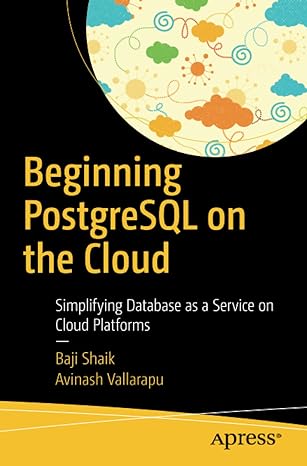Answered step by step
Verified Expert Solution
Question
1 Approved Answer
answer for number 1 is provided, need help with number 2. compare: addi $sp, $sp, 4 sw $ra, 0($sp) add $s0, $a0, $0 add $s1,
answer for number 1 is provided, need help with number 2. 
compare:
addi $sp, $sp, 4
sw $ra, 0($sp)
add $s0, $a0, $0
add $s1, $a1, $0
jal sub
addi $t1, $0, 1
beq $v0, $0, exit
slt $t2, $0, $v0
bne $t2, $0, exit
addi $t1, $0, $0
exit:
add $v0, $t1, $0
lw $ra, 0($sp)
addi $sp, $sp, 4
jr $ra
sub:
sub $v0, $a0, $a1
jr $ra
1) Rewrite the following delayed branch MIPS snippet to maximize performance, assuming it has forwarding. addi $v0, $v0, 1 addi $tl, ?a0, 4 lw $t0, 0 ($tl) add $a0, $t0, ?al addi $a0, $a0, 4 bne $to, $0, Loop nop jr $ra Loop: 2) Now, assume for the delayed branch code from above exercise that our hardware can execute Static Dual Issue for any two instructions at once. Using reordering (with nops for padding), but no loop unrolling, schedule the instructions to make the loop take as few clock cycles as possible. 1) Rewrite the following delayed branch MIPS snippet to maximize performance, assuming it has forwarding. addi $v0, $v0, 1 addi $tl, ?a0, 4 lw $t0, 0 ($tl) add $a0, $t0, ?al addi $a0, $a0, 4 bne $to, $0, Loop nop jr $ra Loop: 2) Now, assume for the delayed branch code from above exercise that our hardware can execute Static Dual Issue for any two instructions at once. Using reordering (with nops for padding), but no loop unrolling, schedule the instructions to make the loop take as few clock cycles as possibleStep by Step Solution
There are 3 Steps involved in it
Step: 1

Get Instant Access to Expert-Tailored Solutions
See step-by-step solutions with expert insights and AI powered tools for academic success
Step: 2

Step: 3

Ace Your Homework with AI
Get the answers you need in no time with our AI-driven, step-by-step assistance
Get Started


